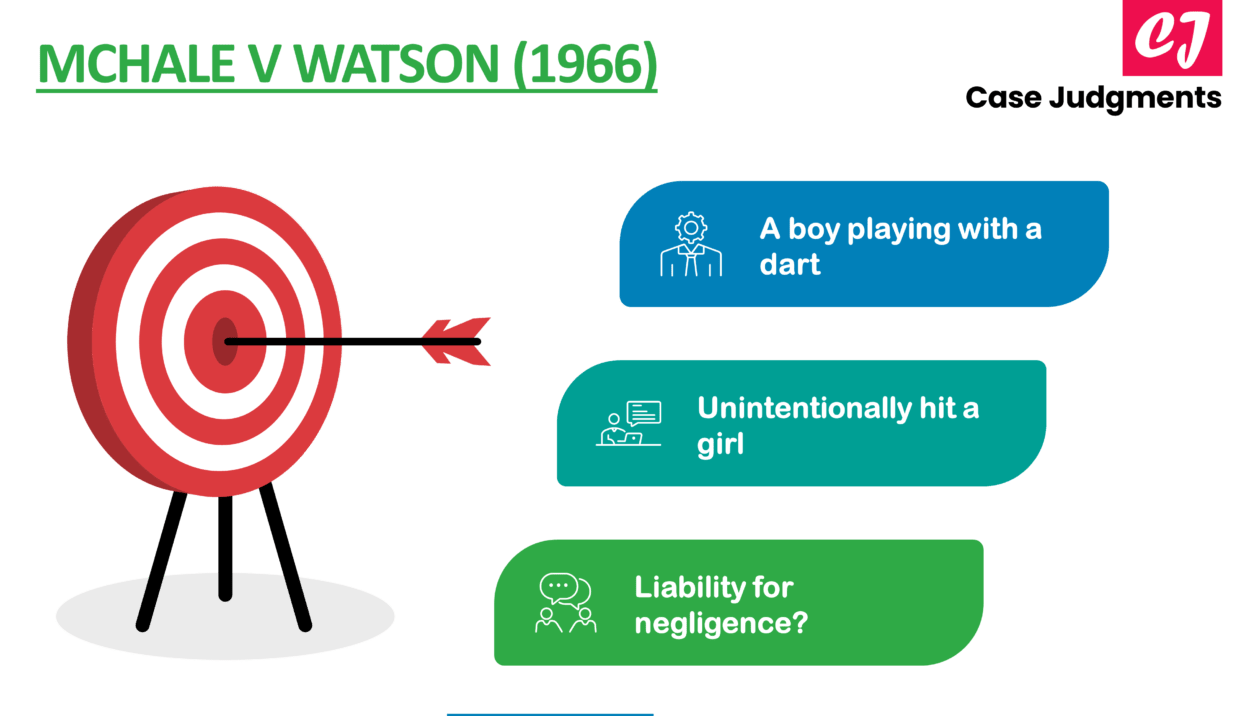
A Quick Summary of McHale v Watson [1966]
Case name & citation: McHale v Watson [1966] 115 CLR 199
- The concerned Court: High Court of Australia
- Decided on: 07 Mar 1966
- The bench of judges: McTiernan A.C.J., Kitto, Menzies and Owen JJ.
- Area of law: Negligence; standard of care
What is the case about?
McHale v Watson (1966) is an Australian tort law case concerning children and the liability for negligence on their part.
Facts of the case (McHale v Watson)
Barry Watson, a child who was 12 years old at the time, threw a sharpened piece of metal that was described as a dart, against a post with the intention of it sticking. When the dart hit the post, it ricocheted off at an angle and struck Susan McHale, a nine-year-old girl standing nearby, in her right eye, resulting in permanent blindness in that eye.
McHale brought an action against Watson and his parents on grounds of negligence.
Issue raised
When determining whether or not the defendant was negligent, was the defendant’s age a relevant factor?
Judgment of the Court in McHale v Watson
The court decided that it could not ignore the boy’s age and that his conduct had to be judged according to the standard of other boys who were the same age as him (that is, 12 years old).
Thus, it was determined that the defendant child need not exercise the level of care as is required of an adult, but rather that of a 12-year-old child with similar experience and intelligence.
The boy was found not to be negligent. This was so because a boy of the age of 12 years could not be expected to foresee the consequences that the dart would not stick into the post and would go off at a tangent and hit someone. Also, he did not intend for any harm to occur.
Liability of parents
In the given case of McHale v Watson, even though the boy’s father had given the dart to his son, the father was not found to be liable by the court.
The court determined that allowing a 12-year-old boy to have the item in question (i.e., a dart) was not negligent and that the eventual misuse of the dart was not reasonably foreseeable by the father. The boy could reasonably be expected to use it safely.
But this result would have been different if the child had been too young to be able to be trusted with a firearm and if the father had given the child access to a gun. That is to say, a parent may be held liable if they are aware that their child is likely to act in a way that could endanger others.
List of references:
- https://www.emilford.com.au/imagesDB/wysiwyg/SarahHeydon-Keyboardpunches-aschoolsdutyofcareinthedomainofcyberbullying.pdf
- https://fpbl.com.au/fpbl2022/Cases/mchale.htm#:~:text=McHale%20sued%20Watson%20and%20his,12%2Dyear%2Dold%20boys.
- https://www.armstronglegal.com.au/commercial-law/national/tort-law/contributory-negligence/
- https://www.lawhandbook.sa.gov.au/ch01s05s01.php
You might also like:
More from tort law:

